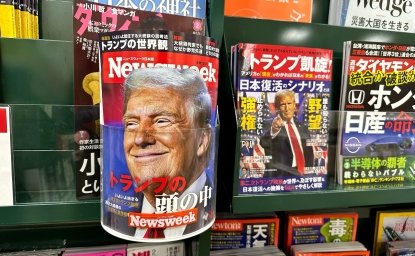Electric Cars: The Drive for a Sustainable Solution in China

August 2009
The CEO of Chinese automaker BYD has recently taken to drinking vials of his company's battery fluid. The fluid, designed for use in electric cars, is theoretically non-toxic and environmentally friendly. While the CEO's choice of beverage may seem trivial or even suicidal, it is symbolic of new Chinese entrepreneurs who aim to build businesses on being green. Some of the most promising of which are the growing government and private sector investors who are dedicated to producing the next generation of clean vehicles.[1]
Outdoor air pollution in China causes over 650,000 premature deaths each year, and many more are hospitalized or put out of work due to illness.[2] The two largest sources of this air pollution are coal-powered electric plants and petroleum fueled cars. While power plants may be the greatest emitter overall, the internal combustion engine (ICE) is a major source of air pollution in urban areas and a large contributor to overall GHG emissions.[3]
The petroleum dependence and pollution from ICEs have forced nations to look for cleaner technologies for vehicles, one of the most prominent alternatives has been the electric vehicle (EV). The zero tail-pipe emissions and ability to build on basic existing power grids and infrastructure have made EVs a very attractive choice for replacing the ICE. Countries all over the world have poured money into research and development of EVs, and China has been at the forefront. In fact, with much media attention, some senior Chinese officials recently outlined plans to become the world's largest producer of EVs.[4]
Why Electric? It Just Makes Sense
There are two main reasons why the Chinese government and industry leaders are enthusiastic about promoting electric vehicles: (1) to reduce China's dependence on imported oil, and (2) to establish a profitable low emissions vehicle industry in China that would reduce significant pollution problems in urban areas. EVs have become the clear leader in achieving these goals when compared to other technologies such as liquid natural gas, hydrogen, or alcohol-based fuel systems. The EV technology, while not fully mature, has had more experience in the real world than many other non-petroleum alternatives. It also requires significantly less, although by no means negligible, technological investment as no additional fuel supply chains are needed. Alternatives are needed soon, as China's vehicle fleet is expected to grow exponentially over the coming decades, exacerbating the current oil and pollution problems.[5]
Oil Dependence
China's Green Revolution—a recent McKinsey and Company report— predicts that at current growth rates, over 270 million vehicles could be added to China's roads by 2030. Along with massive amounts of pollution, these additional cars would require an extra 6.2 billion barrels of imported crude oil per year. [6] To put this in perspective, the 2007 estimate for oil consumption was about 2.8 billion barrels and about half of this was imported. [7][8] These additional ICE cars would significantly increase China's demand for foreign oil.
The majority of Chinese oil has to be imported from foreign sources as local production simply is not enough to meet demand. Relying on foreign sources subjects Beijing to pressures from international oil politics. China experienced this situation in the 1950s when the country was dependent on imported oil from the Soviet Union. When this source dried up during the Sino-Soviet split, China found itself in an energy crisis. The present day reliance on foreign oil has the potential to cause a similar situation.[9] One advantage to electrifying the fleet would be that China could supply the transportation sector's energy demand with domestic coal and other local power sources.
To demonstrate the potential efficiency benefits of EVs, the following table highlights the efficiencies of electric vehicles over ICE vehicles currently available in China.[10]
Domestic Production
In an interview with China Environment Forum (CEF) staff, general manager of BYD America Fred Ni discussed the potential for growth in the EV market and BYD's goal to be at the forefront. He stated that BYD has developed a battery that is of high quality, 100 percent recyclable, and perhaps most importantly, cheaper than its competitors. He hopes that these batteries can be used to overcome cost hurdles in EV development. Currently, BYD is working with local Shenzhen officials to produce electric fleet demonstration models, such as shuttle buses, which it hopes will serve as a model to other cities in the country.[11] BYD, in addition to its own domestic production, wants to work with the big three U.S. automobile companies to produce electric cars with BYD's battery. This is just one of many expanding Chinese companies hoping to reap the benefits of a potential multi-billion dollar EV economy.
China's potential to lead in the EV market is driven by a growing domestic and international demand for these vehicles. The development of a modern EV industry could be a win-win-win for China, reducing the country's dependence on foreign fuel, boosting economic production, and providing health and climate co-benefits.
Health and Climate Co-Benefits
The by-products of internal combustion engines present significant issues for the health and welfare of the Chinese population. The connection between auto pollution and adverse health effects has been well established.[12] Automobile pollution has been linked to increased cancer rates, respiratory diseases, and other significant health issues. A recent study of air pollution in Beijing revealed that the decrease of auto activity, among other measures, during the Olympic Games correlated directly to improved health among Beijing residents.[13]
In addition to health problems, the transportation sector is also a significant contributor of greenhouse gas (GHG) emissions. In 2005, it was estimated that the transportation sector in China was responsible for about 0.4 gigatons of CO2 equivalent emissions.[14] This is about 6 percent of China's total GHG emissions and the second largest sector behind the power sector. Hybrids and EVs have significantly less GHG emissions comparatively.
A shift to either hybrid or fully electric cars would significantly reduce or even eliminate pollutants originating from automobiles, drastically improving urban air quality and the overall health of the Chinese people, especially those in cities. It is important to note that only direct tail-pipe emissions of GHGs and pollutants would be reduced with the introduction of electrified cars; a switch to an electrified vehicle fleet would not completely eliminate air pollutants or GHG emissions, for the pollutant source would simply be transferred to power plants, the majority of which burn coal.
Issues with Power Sources
As EVs do not simply run off free energy, the energy that would have been provided by petroleum would need to be provided by electric power plants, the majority of which in China are coal-fired. As it is, the grid's current capacity is not sufficient to keep up with China's enormous growth and there are regular energy shortages.[15] Wide-scale use of EVs would place an even greater burden on China's electricity grid.
The severity of this burden would depend on the exact energy demands of an EV fleet. Although China has massive plans to build hundreds of coal-fired plants already, this is just to keep up with non-transport demand.[16] In order to accommodate an EV fleet, even more plants would need to be built.
China's power capacity expansion plans rely on its relative domestic abundance of coal. Seventy-eight percent of all energy in China is produced by coal-fired power plants and this percentage is expected to remain high in the foreseeable future. When it comes to environmental health issues, China's coal plants have a notorious track record.[17] Coal-fired power plants currently are the number one source for sulfur-, carbon-, and nitrogen-based pollutants. [18] All of these pollutants are known to have harmful effects on human health, ranging from respiratory illnesses to increased cancer rates. These problems do not speak to the potential effects on health caused by climate change caused by Chinese power plant GHG emissions.[19] The potential effects of sea level rise and glacial melt from climate change could have disastrous results for Chinese citizens. Increased EV usage would increase coal-power related pollutants. However it should still be noted that the overall climate effect of EVs would still be less than that of ICEs.
Out of the Fire into the Frying Pan?
It is generally accepted that EVs would be less damaging to the overall environment in terms of overall output than ICEs, for it is more efficient to produce energy at one source (a plant) than many sources (millions of individual engines). Likewise it is easier to control pollutant outputs and implement environmental technologies to one localized source. Even if the Chinese grid was completely coal powered, which it is not, EVs would still emit less GHGs and pollutants than ICEs.[20] How much less would be determined by the electric demand of EVs and the pollution controls of Chinese coal-fired power plants.
If China is able to power EVs with nuclear, hydro, wind, or solar power sources, the direct emissions impact of EVs is reduced to nearly zero. The environmental efficacy of EVs is dependent on improvements in non-polluting energy sources supplying the country's electricity grid, and China's ability to diversify its energy sector.
Evolution of the EV Market
Still, it would be difficult to immediately electrify all the vehicles in China and ICEs are expected to maintain market supremacy for many years. EVs are not expected to dominate the fleet until well beyond 2030 even with the best market penetration scenarios.[21] The potential benefits of reduced pollution and decreased oil dependence could vary greatly depending on the success of the introduction of EVs. Overall though, the auto fleet in China is roughly doubling approximately every two years. Therefore, the sooner a technology is introduced into the market the greater it's potential impact.
The first step towards an electrified vehicle fleet has been to introduce hybrid vehicles. This introduction, however, has not occurred in any great number. The sales of hybrids in China were 0.00028 percent of the market in 2008, compared to the 2.4 percent in the United States; a difference of 2,617 to 313,486 cars sold, respectively.[22] The main advantage of hybrid vehicles is that they can rely on existing infrastructure. Fully electric cars would require their own charging stations and the aforementioned increase in grid capacity, a potential investment of billions of RMB. This infrastructure would have to be developed before 100-percent electrical cars could be introduced on a large scale. As mentioned earlier, hybrids and plug-in hybrids could be a stepping stone in the transfer to a fully electrified fleet. The major barriers to the full introduction of EVs according to the study by Mckinsey and Company are:
• Price barriers: EVs are predicated to cost significantly more than their ICE counterparts. This is due to the relatively new nature of the technology and nascent production capabilities.
• Infrastructure barriers: billions of dollars are needed to construct infrastructure like charging stations and increased grid capacity
• Battery technology barriers: current battery technology performance is much lower than that of ICE vehicles.
Government Encouragement and Regulation
To try and get past these barriers, the central government has recently pledged millions of RMB towards the domestic development of both EV markets and production capabilities. This investment has come in the form of both consumer-focused subsidies as well as direct government grants towards research and development. EV funding was even recently included as part of the central government's R&D-oriented 863 central plan.[23][24] Locally, the Shenzhen government has partnered with BYD to start introducing plug-in hybrid government vehicles. This was done to encourage their overall use.[25] On the demand side of the market, a 13-city subsidy program was recently initiated in which the central government offered up to ¥60,000 to anyone who purchased an electric or hybrid vehicle.[26]
E-Bikes
Much of the focus of media and analysts has been on electric automobiles in China. However, electric powered vehicles already exist in significant numbers in China in the form of electric bikes. In an interview with the CEF, the Ministry of Environmental Protection's Vance Wagner estimated the number of electric bikes and scooters in China to be over 50 million. Mr. Wagner made the point that they can be seen as a successful example of EV use in China and that they show the potential for cars.[27] Sales estimates of electric bikes are upwards of 10 million a year, nearly three times the estimates for automobiles. [28] While not exactly the same idea as electric cars, they demonstrate the potential market interest for EVs in China.[29]
Associated Impacts
There are many other issues to consider when looking at the overall impact of EVs. For example, the total environmental damage of EVs does not just include emissions from power sources, it also includes consequences of vehicle production. If China becomes the world's largest producer of EVs, it could potentially have significant environmental damage associated with the large-scale production and disposal of EV components, particularly batteries. This is largely dependant on the evolution of battery technology. Outdated lead-acid batteries are notorious for their effects on the quality of environmental health in China.[30] However with some recent battery developments like non-toxic lithium-iron phosphate batteries, the fluid that BYD's CEO drank, potential environmental damage is theoretically reduced.[31]
Conclusion
The successful introduction of EVs in China has the potential to produce massive health, environmental, economic, and security benefits. However, as the technology and production capacity of EVs is relatively nascent, the market penetration capacity of EVs is yet to be determined. The potential benefits of EV's in China are great: reduced air pollution, reduced GHG emissions, and a reduction of the dependence of foreign oil, but there are many hurdles to overcome before EVs can start providing them. Figuring out how to overcome these hurdles will be the most valuable investment China can make in its green car future.
Acknowledgements
The author would like to thank Fred Ni of BYD, David Vance Wagner of the MEP, Jeremy Schreifels of EPA and the entire CEF team–Alan Campana, Linden Ellis, Kexin Liu, and Jennifer Turner–for providing input to this brief. Any shortcomings in the content are the responsibility of the author.
Peter Marsters is the project assistant at the China Environment Forum. He can be reached at peter.marsters@wilsoncenter.org.
[1]Gunther, Marc. (2009 April). "Warren Buffet Takes Charge." CNN Money. [Online.] Available.
[2]Kevin, Holden Platt. (2007 July). "Chinese Air Pollution Deadliest in World, Report Says." National Geographic News. [Online.] Available.
[3]Gurjar, Nagpure, and Singh. (February 2008). "Air Quality in Megacities." The Encyclopedia of Earth. [Online.] Available.
[4]Bradsher, Keith. (April 2009.) "China Outlines Plans for Making Electric Cars." The New York Times. [Online]. Available.
[5]Gao, Wang, and Wu. (October 2008.) "China Charges Up: The Electric Vehicle Oppurtunity." Mckinsey and Company. [Online]. Available.
[6]Gao, Wang, and Wu. (October 2008.) "China Charges Up: The Electric Vehicle Oppurtunity." Mckinsey and Company. [Online]. Available.
[7] Central Intelligence Agency. (2008, October 9). The World Fact Book: China. [Online].Available.
[8]Anonymous. (May 2009.) "UPDATE 1-China Confirms April Crude Imports up 13.6 pct." Alibaba. [Online.] Available.
[9]Downs, Erica Stecker. (2003.) "China's Quest for Energy Security." RAND Corporation. [Online.] Available.
[10]Bradsher, Keith. (May 2009.) "China is Said to Plan Strict Mileage Rules." The New York Times. [Online.] Available.
[11] Interview with Fred Ni. (May 19, 2009.)
[12]Kim, Julie S. (Feburary 2007.) "Transboundary Air Pollution—Will China Choke On Its Success?" China Environment Forum. [Online.] Available.
[13]Zhang, Junfeng. (May 2009.) "Does Air Pollution Reduction during the Olympics Improve Cardio-respiratory Health?" China Environment Forum. [Online.] Available.
[14]Joerrs and Woetzel (Feburary 2009.) "China's green revolution: Prioritizing technologies to achieve energy and environmental sustainability. " Mckinsey and Company. [Online.] Available.
[15]Bai and Graham-Harrison. (July 2008.) "FACTBOX- China's Options to End its Power Shortage." Reuters. [Online.] Available.
[16]Barbosa and Bradsher. (June 2006.) "Pollution From Chinese Coal Casts a Global Shadow." New York Times. [Online.] Available.
[17]Burnard, Keith. (April 2004.) "IEA-China Power Plant Project." International Energy Agency. [Online.] Available.
[18]Fuqiang, Hong, & Yushi. (October 2008.) "The True Cost of Coal." Greenpeace China. [Online.] Available.
[19]Joerrs and Woetzel (Feburary 2009.) "China's green revolution: Prioritizing technologies to achieve energy and environmental sustainability. " Mckinsey and Company. [Online.]Available.
[20]NRDC and EPRI. (May 2009.) "Environmental Assessment of Plug-In Hybrid Electric Vehicles." Electric Power Research Institute. [Online.] Available.
[21]Joerrs and Woetzel (Feburary 2009.) "China's green revolution: Prioritizing technologies to achieve energy and environmental sustainability. " Mckinsey and Company. [Online.] Available.
[22]Bolin, He. (May 2009.) "Hybrid car owners seek subsidies." China Daily. [Online.] Available.
[23]Anonymous. (December 2008.) "China BAK Funded by National 863 Program for its Electric Vehicles Battery Project." redOrbit . [Online.] Available.
[24]The 863 program is a central planning initiative designed to boost China's overall high-tech development, R&D capacity, socio-economic development, and national security.
[25]Interview with Fred Ni (May 19, 2009.)
[26]Bradsher, Keith. (April 2009.) "China Outlines Plans for Making Electric Cars." The New York Times. [Online.] Available.
[27]Interview with David Vance Wagner. (May 14, 2009.)
[28]Cherry, Christopher, Jonathan Weinert & Chaktan Ma. (2007, April). "The Environmental Impacts of E-bikes in Chinese Cities." UC Berkeley Center for Future Urban Transport. Working Paper. [Online]. Available.
[29]Interview with David Vance Wagner. (May 14, 2009.)
[30]Go and Scull. "Lead Batteries: Re-Charging China's E-Waste Disposal." China Environment Forum. [Online.] Available.
[31]Moore, Malcom. (April 2009.) "Electric cars labeled 'overhype' at Shanghai Auto Show." The Telegraph. [Online.] Available.
Author

China Environment Forum
China’s global footprint isn’t just an economic one, it’s an environmental one. From BRI investments in Africa and Asia to its growing presence in Latin America, understanding China’s motivations, who stands to gain - and who stands to lose - is critical to informing smart US foreign policy. Read more

Explore More
Browse Insights & Analysis
Myanmar’s Junta and the 2026 Elections: A Fig Leaf for Legitimacy?

Climate Change, Peace and Security: Discourse Versus Action in Asia

